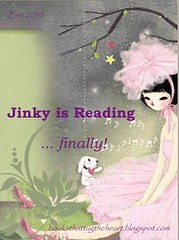"Clay Jensen returns home from school to find a mysterious box with his name on it lying on his porch. Inside he discovers cassette tapes recorded by Hannah Baker—his classmate and crush—who committed suicide two weeks earlier. Hannah's voice tells him that there are thirteen reasons she decided to end her life. Clay is one of them. If he listens, he'll find out why. Clay spends the night crisscrossing his town with Hannah as his guide. He becomes a first-hand witness to Hannah's pain, and learns the truth about himself--a truth he never wanted to face." (book's synopsis)
I'm finding it difficult to critique a book that contains a heavy subject such as found in this book. My mind is cluttered with cargo loads of thoughts and I'm having a hard time sifting and collaborating them to something that is concise and neat. So let's see where my typing fingers take us! Here goes...
The writing style was interesting and so it was easy to move from one page to the next. It's how the characters carry the serious subject matter that gets edgy. As an adult, we might be quick to judge those that seek suicide as a resolve to problems. One might say that it's a coward's way out. Perhaps that is what some readers see of Hannah Baker. But we have to remember that Hannah is a teenager and the book is addressing teen suicide. At that age, many think that the world revolves around them. It's a vulnerable age of discovering and developing oneself. Everyone around them can be influential. Henceforth, they're still children. So this book actually portrays the struggles of teenagers fairly accurately. You're going to find: labeling, promiscuity, deceit, rebellion, back stabbing, recklessness, etc. You're also going to find an array of emotions ... anger, love, jealousy, fear, hate, denial, etc. etc. And in this particular case, Clay and Hannah were at opposite ends of the 'how to deal with life' spectrum. That is why Clay is ignorant and Hannah careless. That's how the author molded them to be, as examples not the rule. The purpose of their stories was to help convey the destructive potential of one's affect on another, hence the 13 reasons why. In other words, what a seemingly harmless act might be detrimental to another.
You've made the author happy because you got the message if: you've made a vow to be more careful in how you deal with people; if you're a teenager that can relate to Hannah but know better how to reach for help; if you're more aware of the signs of someone contemplating suicide and act promptly; or if you could relate to the guilt trip that the "13" felt. Then I like to add that it's not practical to go tip-toeing through life for the sake of the weak. Instead we must arm our children with confidence, wisdom, and security so that they can make better decisions.
This book is not without flaws, but the essential message is there for the taking.
My quote-ables:
"I want to push Stop on the Walkman and rewind their whole conversation... But I can't. You can't rewrite the past." pg 60.
"And that's why I put you on these tapes. To let you know that what you do affects others. More specifically, it affected me." pg 95.
"I guess that's the point of it all. No one knows for certain how much impact they have on the lives of other people. Oftentimes, we have no clue." pg 156.
"You can't go back to how things were. How you thought they were. All you really have...is now." pg 206.



























































How interesting. I tried to read this book but couldn't get into it. I think it's one that you need to be in the right mood for.
ReplyDeleteAlison Can Read